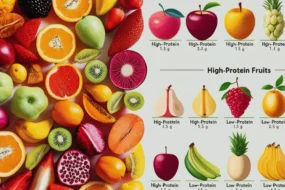
Introducing vegetables to picky eaters can be challenging, but it doesn’t have to cause a lot of fuss. Many kids struggle to eat foods with new textures and flavors, but luckily, there are plenty of great choices.
This article will introduce the best vegetables, not the only ones, but those that are more palatable and less likely to be rejected. From the long list of options, we’ve listed ones like carrots and butternut squash, which offer a crispy texture and mildly sweet taste, making them something kids want to try.
Parents, often concerned about how their children pick and care about how food tastes, can now make mealtime much easier. These veggies can be cut and prepared in ways that will convince even the most selective eaters. So, read on to find the right vegetables and help your child enjoy healthy eating.
The Best Vegetables for Picky Eaters
Carrots, cucumbers, spinach, romaine lettuce, and butternut squash are the best vegetables for picky eaters due to their mild flavors, appealing textures, and versatility in various dishes.
Why Kids Need Vegetables for a Healthy Future
Getting kids to eat vegetables may cause a bit of a fuss, but these essential foods play a vital role in their healthy growth and development. Even if their intake is small or below the recommended number of serves each day, don’t freak out—every little bit counts.
Veggies are packed with minerals, dietary fiber, and powerful phytonutrients from plants that help protect against chronic diseases like heart disease, stroke, and even cancer.
In my own experience, making veggies part of daily meals without making it an all-or-nothing struggle helps. Fun recipes or even just reading the labels can make vegetables more appealing to children. Over time, this approach helps reduce the pitiful struggle many parents face when trying to introduce new veggies.
Balance is key, and including other options like Protein foods for picky eaters ensures your child gets a healthy mix of nutrients while still enjoying their food.

Tips for Kids Who don’t Like Vegetables
Getting kids to love and eat veggies can seem harsh, but it’s not a lost cause. Both evolution and genetics may play a role in picky eating, but that doesn’t mean you’re helpless. Dietitians and pediatric experts constantly remind parents to stay patient and make it a long-term game.
One of the best tips is to keep trying different vegetables and cooking methods until you find what works. In my experience, you shouldn’t give up easily—even if your child initially refuses. With time and the right approach, you can raise a veggie-loving child.
Firstly, Stop Stressing About Vegetables
As a parent, it’s easy to worry about your kids’ veg intake, but there’s no need to stress too much. While vegetables are essential to a kids’ diet—providing fiber, vitamins, and minerals are necessary for healthy growth, development, and immune function—there’s some good news. Many of the same nutrients in veggies are also present in other foods, like fruit.
If your child eats various foods, they will likely get what they need to grow and thrive. A pediatric dietitian would advise you to keep offering veg without stressing, as forcing it can increase the risk of nutritional deficiencies down the line.
Add Veggies Where You Can
Instead of worrying about your picky kids refusing veggies, add them to familiar dishes like bolognese sauce, meatballs, or burgers. This is a great way to help them eat more without too many complaints.
For example, I often blend a few pieces of carrot into our sauce, and my son loves zucchini slices and pumpkin soup. While it’s tempting to hide veggies in smoothies or even black bean brownies, be careful not to cause trust issues with your child. If they ask about what’s in the food, be honest rather than try to sneak it in.
Over time, you’ll find some veggies they enjoy, even if plain zucchini or pumpkins taste too strong at first. Keep offering them, and when they like a new veggie, you can shout it from the rooftops—it’s always worth a try!
Lead by Example
If your kids shy away from veggies, it could be because they’re watching your approach. When children see their parents genuinely enjoying vegetables and making them part of everyday meals, they’re more likely to be curious and try them.
By openly expressing your love for healthy foods and explaining why they’re tasty and beneficial, you set a positive example. Small actions, like pretending broccoli is a tree or making veggies fun, can go a long way, especially with toddlers and preschoolers who observe everything.
For instance, sharing the difference between spinach and broccoli — like how spinach is tender and mild, while broccoli is crunchier with a “tree-like” look — can make these foods feel more approachable and exciting to try. Over time, your enjoyment of these foods can help foster a similar interest in your kids.
Presentation is Key
Presentation is vital for getting picky eaters to enjoy their veggies. You can make the experience more exciting by cutting the vegetables into fun shapes with cute little cookie cutters. For example, carrots and cucumbers can be transformed into star or heart shapes that make them look like little animals on the plate.
Spend a few extra minutes arranging these colorful bites to create a happy face that kids will be excited to eat. Turning veggies into playful creations can spark interest and make mealtime a delightful adventure!
Get Kids Involved
One of the best ways to help kids enjoy vegetables is to get them involved in preparing and cooking meals. Start by letting them take action in the supermarket, where they can help choose their favorite vegetables. Please encourage them to try new tasks like washing, peeling, or chopping the ingredients when preparing the meal.
This hands-on interaction can make the process more enjoyable while helping them learn valuable skills. You can even turn it into a game to keep it physically engaging and positive. By making the experience fun and incorporating their age and abilities into each task, you’re setting the right expectations and creating a life-long appreciation for healthy eating habits.
Offer Options
When it comes to getting children to eat their veggies, it’s essential to offer them a choice to help them feel more in control of their meals. For example, you can let them decide between peas and carrots to go with their chicken dinner.
You can swap out ordinary chips for sweet potato chips on burger night. Make sure to include plenty of different colors, textures, and flavors by trying various cooking methods. This way, they won’t get bored sticking to the same old broccoli and carrots every night.
Include Veggies in Snacks
A smart approach to boosting your child’s vegetable intake is to include them in snacks instead of waiting until dinner. Veggie sticks with a tasty dip or veggie muffins are easy ways to ensure they get more vegetables throughout the day.
You can even pair peanut butter with veggie slices for a snack that’s both fun and nutritious. These are all great ways to sneak in more vegetables without making it a battle during meals.
Remember your Job
As a parent, your job is to decide what foods are offered and when, while it’s your child’s job to choose whether to eat and how much. This approach is called the division of responsibility, and it helps children develop a positive relationship with food.
Avoid using tactics like offering dessert only if they eat their veggies, as this can make vegetables seem less appealing. Instead, remember to stay in your lane and create a peaceful eating environment where kids can naturally enjoy their food.
Carrots
Carrots are a good choice for picky eaters because they are naturally sweet and crunchy, which makes them appealing to kids. Carrots are packed with nutrients like vitamin A, essential for vision. Carrots can be enjoyed raw as a snack or cooked in various dishes. You can even blend them into a smoothie for a hidden veggie boost.
When buying carrots, look for ones with a bright orange color and smooth skin—avoid any that are dull or have cracks. Their versatile nature allows them to be added to many meals, making them a go-to option for kids and adults.
Cucumbers
Cucumbers are an excellent option for picky eaters because they are crunchy and refreshing when eaten raw. They’re also low in calories and fat but packed with essential vitamins like A, C, and K. Their versatile nature makes them easy to include in various dishes—whether in a salad, on a sandwich, or just enjoyed plain.
You can also experiment by cooking them, such as roasting them or adding them to soups and stews. Cucumbers are a healthy, delicious vegetable that should be at the top of your list when considering options for everyone, especially a picky eater.
Spinach
Spinach is an excellent vegetable for picky eaters because of its mild taste and crunchy texture when eaten raw. It’s low in calories but fiber, making it a healthy choice. Whether raw in salads or cooked, spinach offers versatility.
Cooking roasted, blanched, or sautéed spinach can help soften the leaves and reduce their bitter notes, bringing out a natural sweetness while reducing the impact of oxalic acid enhancing nutrient absorption. While raw spinach might be tricky to chew for some, cooking makes it more enjoyable for everyone, including picky eaters.
Romaine lettuce
Romaine lettuce is an excellent vegetable for picky eaters. Its mild flavor doesn’t overwhelm the senses, making it a perfect introduction to more veggies. Plus, it’s packed with nutrients, especially vitamins A and C, and is a source of fiber.
You can use romaine in many ways: enjoy it raw in salads or get creative by adding it to wraps, sandwiches, or cooked dishes like stir-fries and soups. Its crunchy texture and low calories allow for more volume in your meal, keeping your diet healthy and delicious.
Butternut squash
Butternut squash is a winter vegetable with a sweet and nutty flavor that many picky eaters find appealing. Its vibrant orange or yellow color adds visual interest to meals while being a rich source of vitamins A, C, and fiber.
Whether roasted as a side dish or pureed into soups and sauces, its natural sweetness and tender texture make it versatile. You can blend it into a puree for a hearty stew or use it as a creamy dip or sauce.
White potatoes
Despite their sometimes questionable reputation, white potatoes are actually quite nutritious, providing fiber, vitamin B, and antioxidants. Many children easily accept them, especially when served mashed with a bit of butter or as a classic jacket potato topped with cheese.
For a healthier twist, try making baked chips or french fries at home instead of frying them. This way, you can offer a healthier option that even the pickiest eaters will like.
Cherry tomatoes
Cherry tomatoes are a fun fruit that often feels like a vegetable due to their savory use. Their bright red, juicy, and slightly sweet flavor makes them an easy hit with kids, even those who are picky. You can skewer them on a kebab with some cheese for a quick, colorful snack or toss them into a lunchbox. They also work great on a snack platter, offering a burst of healthy and satisfying flavor.
FAQ’s
Q: What is the Best Food for Picky Eaters?
For picky eaters, try cereal, granola bars, or fruit kebabs. Protein-packed snacks like crackers or mini sandwiches work well. For treats, offer frozen yogurt drops, juice popsicles, or smoothies. You can also sneak nutrients into muffins and breads or use freeze-dried vegetables.
Q: What Vegetables do Most Children Like?
Most kids like sweeter vegetables like mashed sweet potatoes, carrots, and butternut squash. These options are naturally sweet, which makes them more appealing compared to more bitter vegetables. Sweetcorn is another favorite, and colorful peppers can be fun for them to eat.
Q: What Fruit is Good for Picky Eaters?
For picky eaters, softer fruits like apples, pears, and peaches are usually a hit due to their gentle texture. Serving them warm can make them even more appealing. Frozen or canned fruit, especially when packed in 100% juice or water, can also be great alternatives for those who prefer something easy to chew or sweeter.
Conclusion
Incorporating vegetables into a picky eater’s diet can be challenging, but with the right approach, it’s possible. Offering a variety of sweet, crunchy, and visually appealing options like carrots, butternut squash, cherry tomatoes, and creative preparation can make veggies more enjoyable. By staying patient, involving kids in meal prep, and making vegetables fun, parents can help their children develop healthier eating habits that last a lifetime.
I’m Ayesha Zahid, a certified Nutritionist and Dietitian with over 3 years of hands-on experience helping individuals and families improve their health through nutrition.




